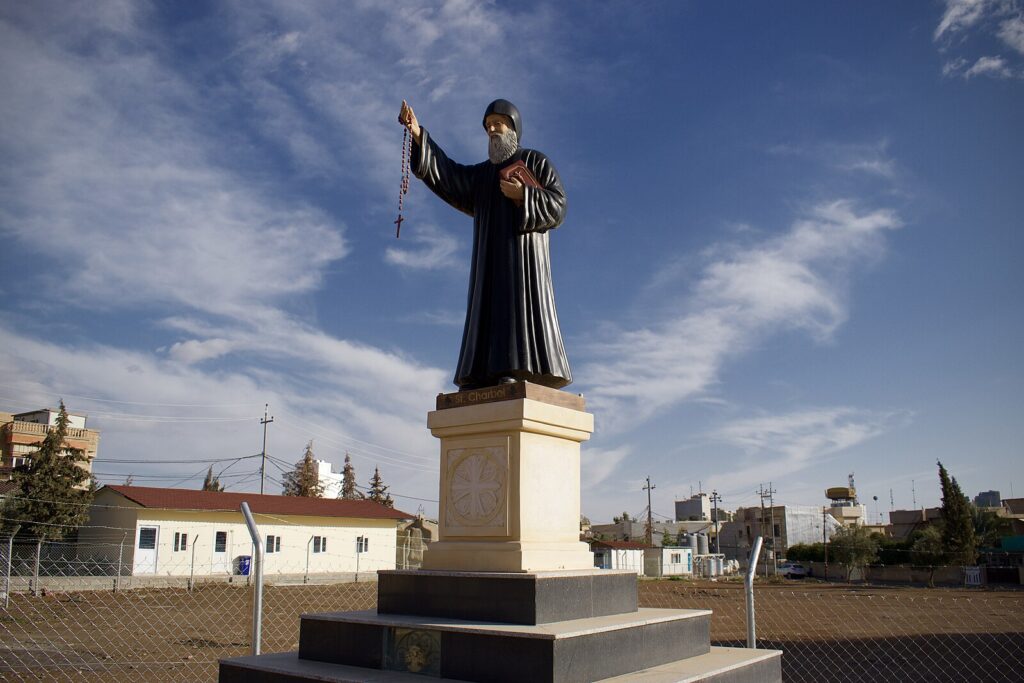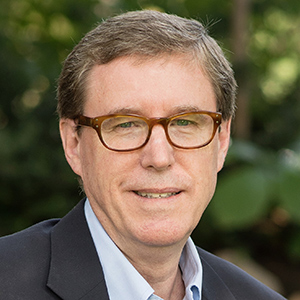
I have had the privilege of knowing Mitri Raheb for a long time—since the days when our careers were young. I remember my first attempt to bring college students to Bethlehem and provide them with an honest engagement with the local church. Raheb was the pastor of a Lutheran church in Bethlehem and I had a crew of about 30 eager college students. His students met mine on a rooftop somewhere in town and I watched the magic of what inter-cultural connection looks like. The students later told me it was one the best things they ever participated in. Thanks to that moment and Raheb’s modeling, I’ve had this same experience with hundreds of students since then.
By now I’ve read most of Raheb’s books. I am a Palestinian Christian: God and Politics in the Holy Land: A Personal History (1995) was inspiring. Bethlehem Besieged: Stories of Hope in Times of Trouble (2004) was infuriating. Faith in the Face of Empire: The Bible Through Palestinian Eyes (2014) made me rethink a great deal about how theology and history interface. And now, The Politics of Persecution: Middle Eastern Christians in an Age of Empire simply made me sad. Better informed, to be sure, but still sad. When I reached the epilogue, I felt like a friend of mine from the South who recently discovered that his great great grandfather owned a slave plantation in Georgia from which his family profited richly. Part of that legacy money is somewhere in his bank account today, leaving him unsure how to perceive his wealth or even his old family photos.
In this short post, I can hardly do justice to this excellent book or provide a substantial response to the many arguments it contains within. I will therefore primarily focus on a few significant points, as well as one point of criticism. My chief interest is in how Raheb has sustained a conversation with the west—in particular with the western church—something few other Palestinians have done successfully. The book helpfully surveys the way that western powers have pursued their interests in the Middle East for the last 200 years, focusing on how such foreign involvement has affected the Arabic-speaking church from Iraq to Egypt. It is full of surprises and is indeed, as Philip Jenkins describes in his blurb, a trove of information and analysis.
One example of this is Raheb’s account of the diplomatic connections developed between the Ottomans and the Germans and how these connections led to their alliance in WWI. Another example is how the Ottoman millet system both benefited from and later fractured the religious communities present during the Ottoman Empire. Still another is his description of the ways that western powers—and here I think mainly of France and England—resisted the inclusion of Arab leadership into the church structures that had been put in place. As a feature of this colonial project, western church leaders had educated and empowered the Arab laity but neglected to include the Arab clergy who were significant leaders in every community. Though they were eventually incorporated, the Greek Orthodox church still struggles with this inclusion and is barely indigenized.
The book helpfully surveys the way that western powers have pursued their interests in the Middle East for the last 200 years, focusing on how such foreign involvement has affected the Arabic-speaking church from Iraq to Egypt.
Another example of western church failings appears in the story of Iqrit. I was familiar with the horrible story of the village of Iqrit but not in the detail provided in Raheb’s book. I found myself once again infuriated and made a silent vow to bring 30 more students to that ruin and its church to show them material evidence of a crime scene. I’ll be back in January with 30 more students where they will meet with some of the grandchildren of Iqrit in Nazareth.
It was a sentence on page 72 that haunted me: “No wonder that many Middle Eastern Christians do not trust western sympathy for ‘persecuted Christians.’” From Balfour to the 21st century Western Christian, calls to protect the church ring hollow when one looks at the implementation of foreign policies in many European states. Today, this hollow ring is heard most loudly from the U.S. and its involvement in the region. While evangelical politicians call for the security of Arab Christians, their policies betray them.
The displacement of Arab Christians is such a sobering story that I, too, would be suspicious of any overtures from the west. The statistics for the depopulation of the Christian Middle East are sobering. In the 19th century, Christians made up 20% of the region’s population; today, only 3%. In Palestine, if this emigration had not occurred, there would be 600,000 Palestinian Christians in the Middle East. Imagine that.
Three themes resonated with me in the book that I will focus on in the rest of this post. And there is a fourth where Raheb lets us off too easily.
First, western involvement in the region instigated the three most destructive events for the region’s churches. Each time, western governments used the claim that they were “protecting minorities” as a pretext for their colonial expansion. There was the German-Turkish collusion in the Armenian massacre, then the British betrayal of the Assyrian communities in Iraq, and lastly the American invasion of Syria and Iraq in 2003. Each of these events devastated Christian communities. Raheb summarizes on page 150, “I am not aware of a single case in which western empires played a constructive role in creating a political framework in the Middle East where Christians and others could thrive.” I agree. We should rethink the explanation that the west has been a force for good in the Middle East. We are skilled at finding and defending oil reserves, but less good at finding and defending the region’s minorities. There is a level of irony and hypocrisy here that must be named: Western powers and in particular, the U.S., have been instrumental in breaking up the most ancient Christian community in the Middle Eastern world.
Second, Raheb describes the western disparagement of Islam as a tool used to understand the region; to decide who are its victims and who its valiant defenders of order. From this perspective, Arab Christians are the victims of Islamic extremism and Israel is usually claimed to be a welcome enclave of sanity. I wish I could count how many times I have heard this in the church. The problem is that this invites us to take on a colonial worldview: the Muslim is backward, barbaric, and intolerant. This worldview, as Raheb shows, has more to do with western perceptions than concrete facts. It helps us feel “civilized” and as the transporters of light to a very dark world. This is why reading Raheb is important. For those who continue to carry stereotypes like this today, hearing an Arab Christian voice of this caliber will certainly change that perspective.
Western powers and in particular, the U.S., have been instrumental in breaking up the most ancient Christian community in the Middle Eastern world.
If the length and scope of the book had allowed, I think we would have benefited from hearing how Islam itself is undergoing its own confusing period of self-definition. 9/11 is now a symbol, an unfair symbol to be sure, of how many perceive Islam. There have been instances from Madrid, to Paris, to London not to mention Somalia, Pakistan, Afghanistan and Nigeria where extreme groups have not helped western perceptions. I do not pretend to know how Islamic leaders are coping with this and would like to learn more. But I know that for my Muslim friends, it is an embarrassment and a dilemma. Maybe a crisis.
When I guest-lectured in a seminar at a university in Amman a few years ago, to my surprise I met a small group of Muslim firebrands launching threatening criticism of me and the west. Though myself and some of the other faculty present were unsure how to respond, the Muslim women in the room engaged in this verbal battle and silenced all of these militant young men with eloquence and intelligence. I wondered if I was witnessing something important. Were the Muslim women less enamored of this sort of reactive intimidation? Were they the courageous voices that can speak into this situation? I think there is a secret hidden in this story. Perhaps an analogy can be found in modern Iran where women lead the way against the Islamic clerics in their country.
Lastly, evangelicals in the west are driven by an agenda of Christian persecution and suffering in the Middle East. For some mysterious reason, I get a newsletter mailed to me from the organization Voice of the Martyrs. It is a case-study that exposes the reader to dreadful images of loss before asking for money. I see it now as evidence of a persecution-industry within my own evangelical tribe. This view is widespread and never questioned. But as former Vice President Pence has written (and know he is an evangelical Zionist, see page 146), these stories of persecution gain traction in Washington and can be used to justify intervention in any part of the world, particularly the Middle East.
If there was room for improvement, I would argue that Raheb is far too generous with the American Evangelical church and how it has woven Zionism into a political ideology that is a mash-up of eschatology and colonialism. He pins this down well in the late 19th century and gives the British and French their due. Here, however, I am thinking of people I know: evangelical leaders that churches are following whose theological views produce intolerance, violence, and inspire a foreign policy of militancy toward the region. Those in the US need a prophetic rebuking no less than that which appears in the book with regard to the Europeans. But perhaps this is for another book.

